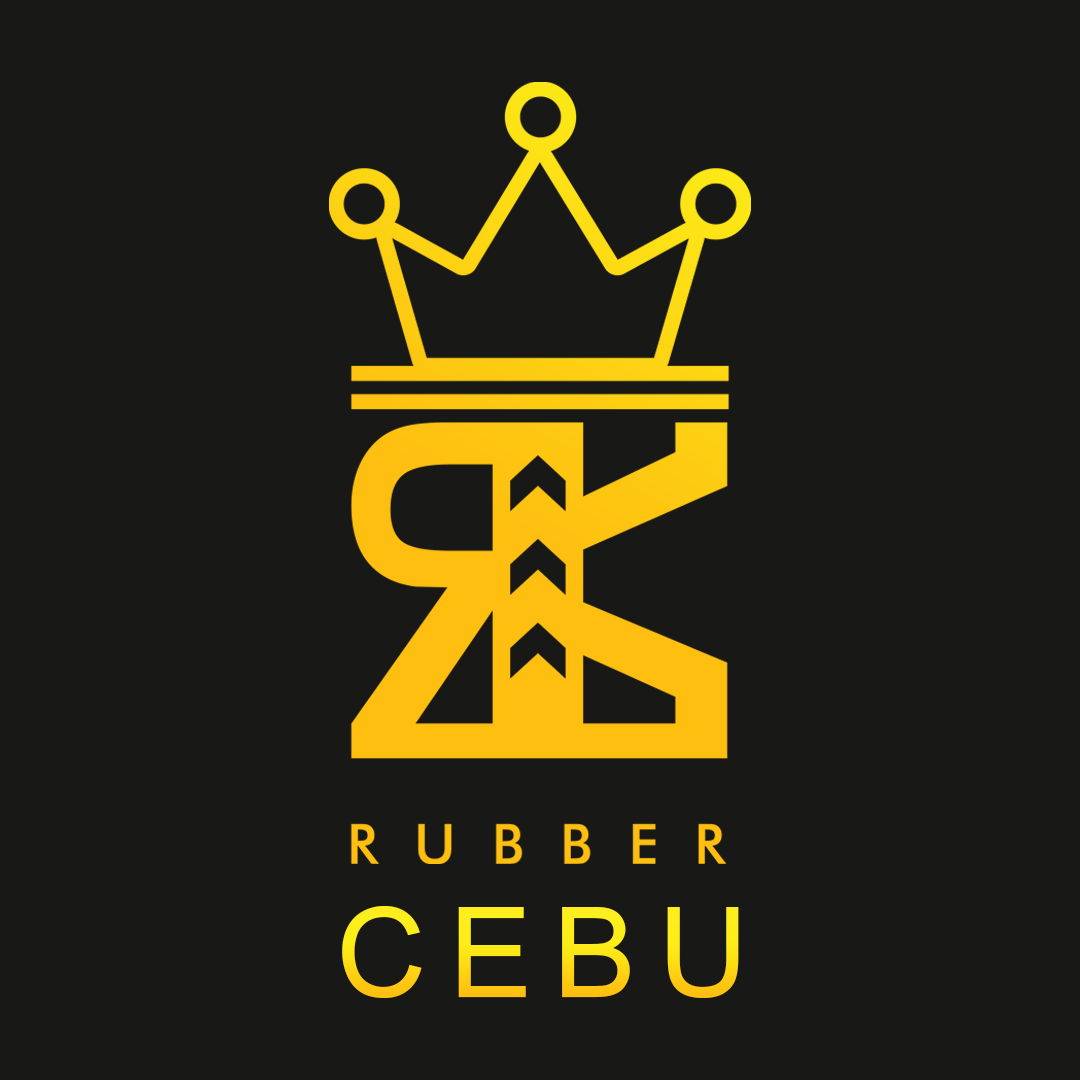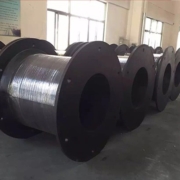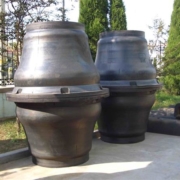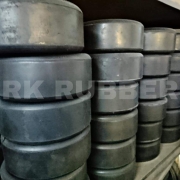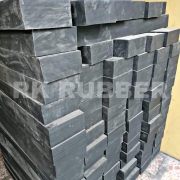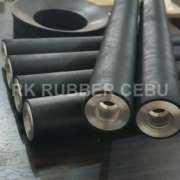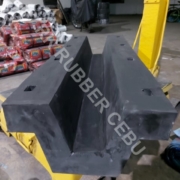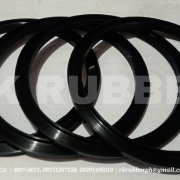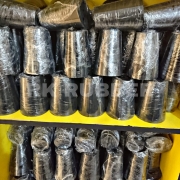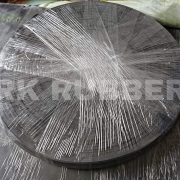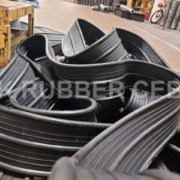Donut Type Rubber Bumper Supplier in Cebu City
Cebu City’s industrial landscape demands precision-engineered solutions, and donut-type rubber bumpers have emerged as a critical component for applications requiring superior shock absorption and vibration isolation. These bumpers, characterized by their unique toroidal design, offer enhanced load distribution and durability compared to traditional counterparts. Suppliers like RK Rubber Cebu leverage advanced vulcanization techniques and high-grade elastomers to meet stringent industry standards. With applications spanning marine, automotive, and heavy machinery sectors, the choice of supplier becomes pivotal. What sets apart a reliable provider in this competitive market? The answer lies in material quality, customization capabilities, and adherence to ISO-certified manufacturing processes.
Key Points
- RK Rubber Cebu offers customizable donut-type rubber bumpers tailored to specific shapes, sizes, and colors for diverse industrial needs.
- Provides high-grade rubber bumpers with superior durability, environmental resistance, and excellent force absorption for harsh conditions.
- Specializes in precision manufacturing with rigorous quality control to ensure consistent performance and long-lasting reliability.
- Offers competitive pricing and timely delivery, backed by positive customer testimonials and deep local market expertise.
- Supplies donut-type rubber bumpers for marine, automotive, aerospace, and industrial applications, ensuring vibration reduction and noise dampening.
Advantages of Donut Type Rubber Bumpers
With their unique circular design and robust construction, donut-type rubber bumpers offer a cost-effective solution for protecting investments across various industries. These bumpers are engineered to provide cost-effective protection by absorbing impact forces, reducing damage to equipment and surfaces during collisions. Their lightweight design guarantees easy transport and installation, making them ideal for applications requiring portability without compromising durability. Additionally, donut-type rubber bumpers are designed with high collision resistance, securing peak performance in high-impact environments.
Constructed from high-grade materials, these bumpers exhibit exceptional environmental resistance, withstanding extreme temperatures, UV exposure, and harsh chemicals, making them suitable for both indoor and outdoor use. Their versatility is further enhanced by customizable options, including tailored shapes, sizes, and colors, allowing them to meet specific client requirements while maintaining functionality.
The circular shape of donut-type rubber bumpers guarantees uniform force distribution, enhancing their ability to absorb shocks and vibrations. This design also contributes to their longevity, reducing maintenance costs over time. Whether used in industrial casters, marine applications, or heavy machinery, these bumpers deliver reliable performance, making them a preferred choice for industries prioritizing safety, efficiency, and durability.
Key Applications Across Industries
Donut-type rubber bumpers are widely utilized across a diverse range of industries due to their exceptional performance in impact absorption, vibration damping, and environmental resilience. In marine protection, these bumpers are integral for docking systems and boat fendering, safeguarding vessels and infrastructure from collisions and harsh water conditions. Aerospace engineering leverages their vibration isolation properties to enhance the durability and performance of sensitive equipment. Industrial casters equipped with donut-type bumpers provide superior flooring protection, preventing damage to surfaces while ensuring smooth equipment movement. Within commercial sectors, these bumpers are employed in machinery, architectural structures, and transportation systems, offering reliable shock absorption and noise reduction. Their resistance to extreme temperatures, chemicals, and wear makes them ideal for demanding environments. By combining technical precision with adaptability, donut-type rubber bumpers address the unique challenges of each industry, ensuring operational efficiency and long-term asset protection. Their versatility and robust design make them indispensable in applications requiring high-performance impact mitigation and environmental resilience.
Benefits of Using Donut-Type Rubber Bumpers
Donut-type rubber bumpers provide superior force absorption, effectively minimizing impact damage and enhancing safety in industrial and automotive applications. Their design substantially reduces vibration and noise, ensuring smoother operations and prolonged machinery lifespan. With versatile applications across industries and high-grade materials ensuring durability, these bumpers offer reliable, long-lasting performance in demanding environments.
Enhanced Force Absorption
When subjected to high-impact forces, donut-type rubber bumpers excel in mitigating damage by effectively absorbing and dissipating energy, guaranteeing ideal protection for both equipment and surfaces. Their unique circular design enhances impact resistance, allowing them to distribute stress evenly across the bumper, which minimizes localized damage. This stress distribution capability is critical in applications where heavy machinery or vehicles are prone to collisions, as it prevents structural deformation and prolongs the lifespan of both the bumper and the protected surfaces. Additionally, the energy dissipation properties of these bumpers guarantee that kinetic energy from impacts is converted into less harmful forms, such as heat, rather than being transferred to the equipment or surrounding structures. This shock mitigation feature is particularly valuable in industries like automotive, manufacturing, and aerospace, where collision protection is essential for operational safety and efficiency. By combining high-grade materials with advanced engineering, donut-type rubber bumpers provide reliable performance in demanding environments, making them a preferred choice for businesses in Cebu City and beyond. Their ability to absorb force while maintaining structural integrity underscores their role as a cost-effective solution for safeguarding investments.
Vibration and Noise Reduction
In environments where machinery and equipment operate under high stress, the ability to minimize vibration and noise is critical for both performance and safety. Donut-type rubber bumpers excel as soundproofing solutions, offering superior noise dampening and vibration isolation properties. These bumpers are engineered to absorb and dissipate energy, reducing the transmission of vibrations that can lead to structural wear, operational inefficiencies, and excessive noise levels. By integrating industrial acoustics principles, they effectively contribute to machinery quieting, guaranteeing smoother operations and a safer workplace.
The unique circular design of donut-type rubber bumpers enhances their ability to isolate vibrations, making them ideal for applications in heavy machinery, automotive systems, and aerospace engineering. Their high-grade rubber composition secures durability while maintaining flexibility, which is essential for long-term noise and vibration control. For industries in Cebu City and beyond, these bumpers provide a cost-effective solution to mitigate the challenges of industrial noise and vibration, aligning with local market demands for reliable and efficient equipment protection. By addressing these issues, donut-type rubber bumpers not only improve operational efficiency but also extend the lifespan of machinery and equipment.
Versatile Industrial Applications
With their ability to adapt to diverse operational demands, donut-type rubber bumpers have become indispensable across a wide range of industrial applications. In marine protection, these bumpers are widely used for docking systems and boat fendering, providing reliable shock absorption and environmental resistance against saltwater corrosion. In aerospace engineering, they serve as critical components for vibration isolation and shock absorption, ensuring the integrity of sensitive equipment during high-stress operations. For commercial flooring, donut-type rubber bumpers are integrated into industrial casters and leveling feet, safeguarding surfaces from damage caused by heavy machinery and frequent movement. Their environmental resistance makes them ideal for outdoor applications, where they withstand extreme temperatures, UV exposure, and chemical exposure. Additionally, their versatility extends to industries requiring robust protection, such as manufacturing and heavy machinery, where they reduce noise and vibration while enhancing operational efficiency. By combining durability with adaptability, donut-type rubber bumpers offer tailored solutions that meet the unique demands of various sectors, ensuring both performance and longevity.
Beyond their versatile industrial applications, donut-type rubber bumpers excel in delivering durable and long-lasting performance, essential for industries prioritizing equipment longevity and operational reliability. These bumpers are engineered with a superior material composition, typically high-grade rubber compounds, guaranteeing resilience against wear and tear. Their environmental resistance makes them ideal for harsh conditions, including exposure to extreme temperatures, chemicals, and moisture, which could compromise lesser materials. Additionally, donut-type rubber bumpers can be tailored through custom design to meet specific operational demands, enhancing their effectiveness across diverse industrial settings. To maximize their lifespan expectancy, regular maintenance tips such as routine inspections and cleaning to remove debris are recommended.
- Material Composition: High-grade rubber compounds guarantee durability and resistance to wear.
- Environmental Resistance: Withstands extreme temperatures, chemicals, and moisture for reliable performance.
- Custom Design: Tailored solutions to meet unique industrial requirements.
- Maintenance Tips: Regular inspections and cleaning to extend lifespan expectancy.
Investing in donut-type rubber bumpers guarantees not only protection but also operational efficiency and cost savings over time.
Difference of Donut Type To The Traditional Rubber Bumper
While both donut-type and traditional rubber bumpers serve the purpose of impact absorption and protection, the donut-type rubber bumper distinguishes itself through its unique design and enhanced functional capabilities. Regarding shape comparison, the donut-type features a circular, hollow center, which enhances its ability to distribute impact forces more evenly compared to the solid, block-like design of traditional bumpers. This design also contributes to its superior impact resistance, making it ideal for high-stress environments.
Material differences further set the donut-type apart, as it is often crafted from high-grade rubber compounds that offer better durability and resistance to harsh conditions, such as extreme temperatures and chemical exposure. The installation ease of donut-type bumpers is another advantage, as their lightweight and portable design simplifies mounting and repositioning.
From a cost efficiency perspective, the donut-type bumper provides long-term savings due to its extended lifespan and reduced maintenance needs. These features make it a preferred choice in industries like automotive, manufacturing, and aerospace, where performance and reliability are critical.
Manufacturing Process and Quality Standards
Leveraging advanced precision molding techniques, the manufacturing process of donut-type rubber bumpers begins with the careful selection of high-grade raw materials, guaranteeing durability and resistance to harsh environmental conditions. The material selection criteria prioritize compounds that withstand extreme temperatures, oil, and chemicals, making them ideal for industrial applications. Precision molding techniques are employed to achieve consistent shapes and sizes, guaranteeing uniformity across batches. Quality control measures, including rigorous inspections and performance testing, confirm compliance with industry standards and client specifications. Production efficiency optimization is achieved through streamlined processes and advanced technology, reducing lead times while maintaining high-quality outputs. Design customization options allow for tailored solutions, including specific shapes, sizes, and branding, to meet unique client requirements.
- Material Selection: High-grade rubber compounds chosen for durability and environmental resistance.
- Precision Molding: Advanced techniques guarantee consistent dimensions and structural integrity.
- Quality Assurance: Thorough inspections and testing to meet industry standards.
- Customization: Tailored designs and branding options to align with client needs.
This meticulous approach guarantees that donut-type rubber bumpers deliver superior performance, reliability, and adaptability across diverse industrial applications.
Why RK Rubber Cebu Choose As Your Supplier
RK Rubber Cebu stands out as a trusted supplier of donut-type rubber bumpers due to its commitment to quality, technical expertise, and deep understanding of local and global industrial demands. With a focus on quality assurance, the company guarantees that every product meets stringent performance standards, utilizing high-grade materials and precision molding techniques. RK Rubber Cebu offers personalized solutions, tailoring shapes, sizes, and colors to meet specific client requirements, enhancing both functionality and aesthetic appeal. Their competitive pricing secures cost-effective solutions without compromising durability or performance. Positive customer testimonials highlight the company’s reliability, with many clients praising their ability to deliver reliable delivery timelines, even for large-scale orders. RK Rubber Cebu’s local market knowledge enables them to address unique industrial challenges, providing products that excel in force absorption, vibration reduction, and noise dampening. Whether for automotive, marine, or aerospace applications, RK Rubber Cebu combines technical expertise with exceptional customer service, making them the preferred choice for donut-type rubber bumpers in Cebu City and beyond.
Frequently Asked Questions
What Is the Lead Time for Custom Orders?
Custom lead times vary based on production schedules, order processing complexity, and manufacturing timelines. Delivery estimates depend on material availability, customization requirements, and production capacity, ensuring timely fulfillment while maintaining quality standards.
Are There Eco-Friendly Material Options Available?
Eco-friendly material options include biodegradable materials and recycled rubber, sourced sustainably to align with green manufacturing processes. These choices support eco-conscious production, reducing environmental impact while maintaining durability and performance in industrial applications.
Can I Request Samples Before Placing a Bulk Order?
Sample availability is guaranteed to exceed expectations, with impeccable sample quality tailored to your exact specifications. Sample shipping is swift, and sample approval guarantees perfection before bulk orders. Sample customization options are virtually limitless.
What Is the Maximum Weight Capacity for These Bumpers?
The maximum weight capacity for donut-type rubber bumpers varies based on design and material specifications. Weight limits and load capacity are determined through rigorous stress testing, ensuring bumper durability and compliance with safety standards.
Do You Offer International Shipping Services?
Over 90% of global trade relies on international shipping. We provide extensive international logistics, including competitive shipping rates, diverse delivery options, efficient customs clearance, and real-time tracking services to guarantee seamless global distribution of products.
Conclusion
Donut-type rubber bumpers from RK Rubber Cebu provide superior force absorption, vibration reduction, and noise dampening, making them indispensable in marine, automotive, and heavy machinery applications. For instance, a Cebu-based shipyard reported a 30% reduction in equipment wear after switching to RK Rubber’s bumpers. Their customizable designs, adherence to ISO quality standards, and competitive pricing guarantee reliable, cost-effective solutions tailored to diverse industrial needs, solidifying their position as a trusted supplier in Cebu City.
